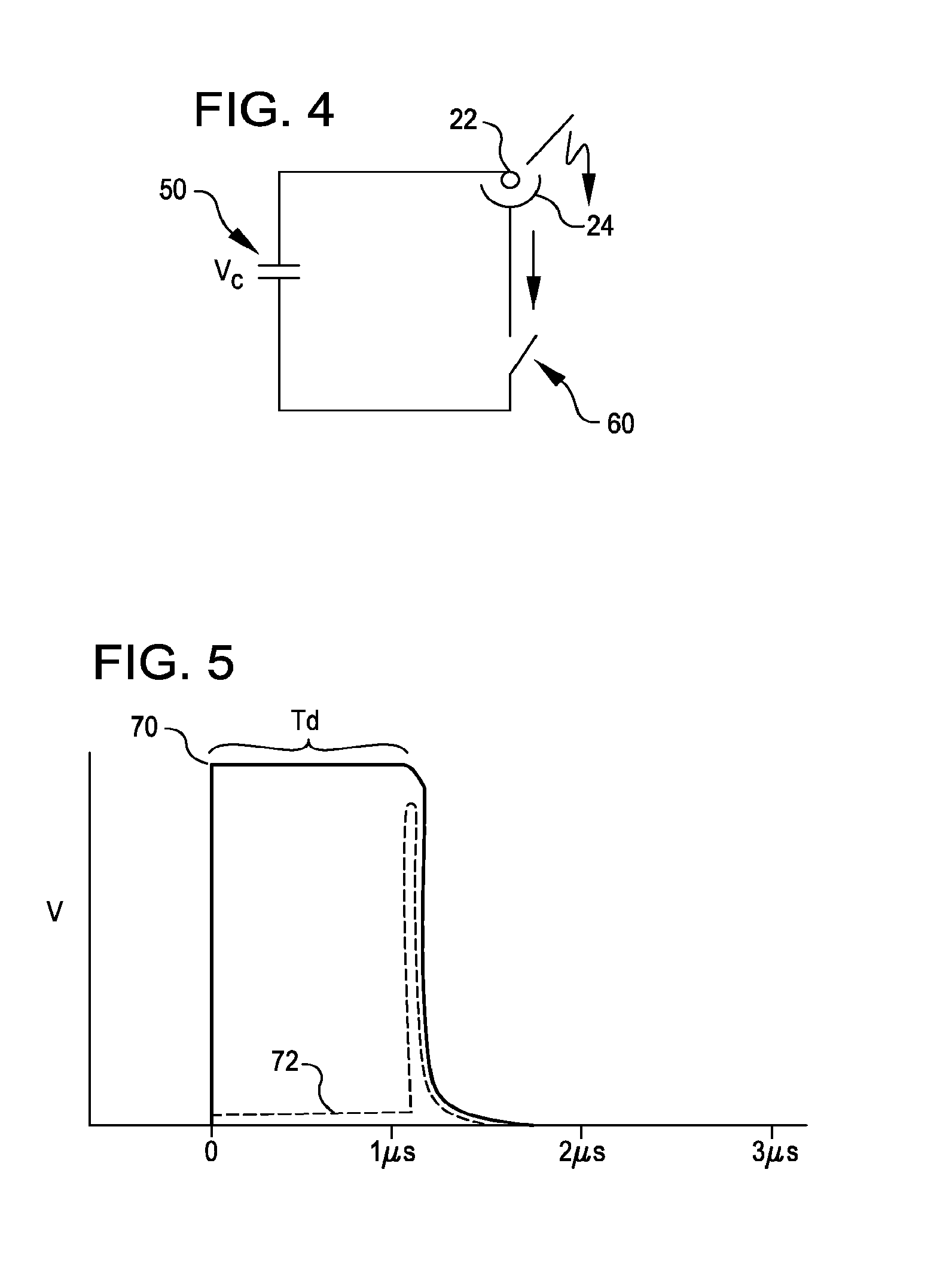Shockwave catheter system with energy control
a catheter system and shock wave technology, applied in the field of percutaneous coronary angioplasty or peripheral angioplasty, can solve the problems of high level of restraint, thrombosis, undue stress on the free wall of the vessel, and achieve the effects of reducing energy, increasing fluid temperature, and reducing energy
- Summary
- Abstract
- Description
- Claims
- Application Information
AI Technical Summary
Benefits of technology
Problems solved by technology
Method used
Image
Examples
Embodiment Construction
[0055]FIG. 1 is a simplified side view of an angioplasty balloon catheter 20 of the type that may utilize various embodiments of the invention to advantage. The catheter 20 includes an elongated carrier, such as a hollow sheath 21, a dilating balloon 26 formed about the sheath 21 in sealed relation thereto and a guide wire member 28 to which the balloon is sealed at a seal 23. The guide wire member has a longitudinal lumen 29 through which a guide wire (not shown) may be received for directing the catheter 20 to a desired location within a vein or artery, for example.
[0056]The sheath 21 forms with the guide wire member 28 a channel 27 through which fluid, such as saline, may be admitted into the balloon to inflate the balloon. The channel 27 further permits the balloon 26 to be provided with an electrode pair 25 including electrodes 22 and 24 within the fluid filled balloon 26.
[0057]As may be seen in FIG. 2, the electrodes 22 and 24 are attached to a source 40 of high voltage pulses...
PUM
 Login to View More
Login to View More Abstract
Description
Claims
Application Information
 Login to View More
Login to View More - R&D
- Intellectual Property
- Life Sciences
- Materials
- Tech Scout
- Unparalleled Data Quality
- Higher Quality Content
- 60% Fewer Hallucinations
Browse by: Latest US Patents, China's latest patents, Technical Efficacy Thesaurus, Application Domain, Technology Topic, Popular Technical Reports.
© 2025 PatSnap. All rights reserved.Legal|Privacy policy|Modern Slavery Act Transparency Statement|Sitemap|About US| Contact US: help@patsnap.com



